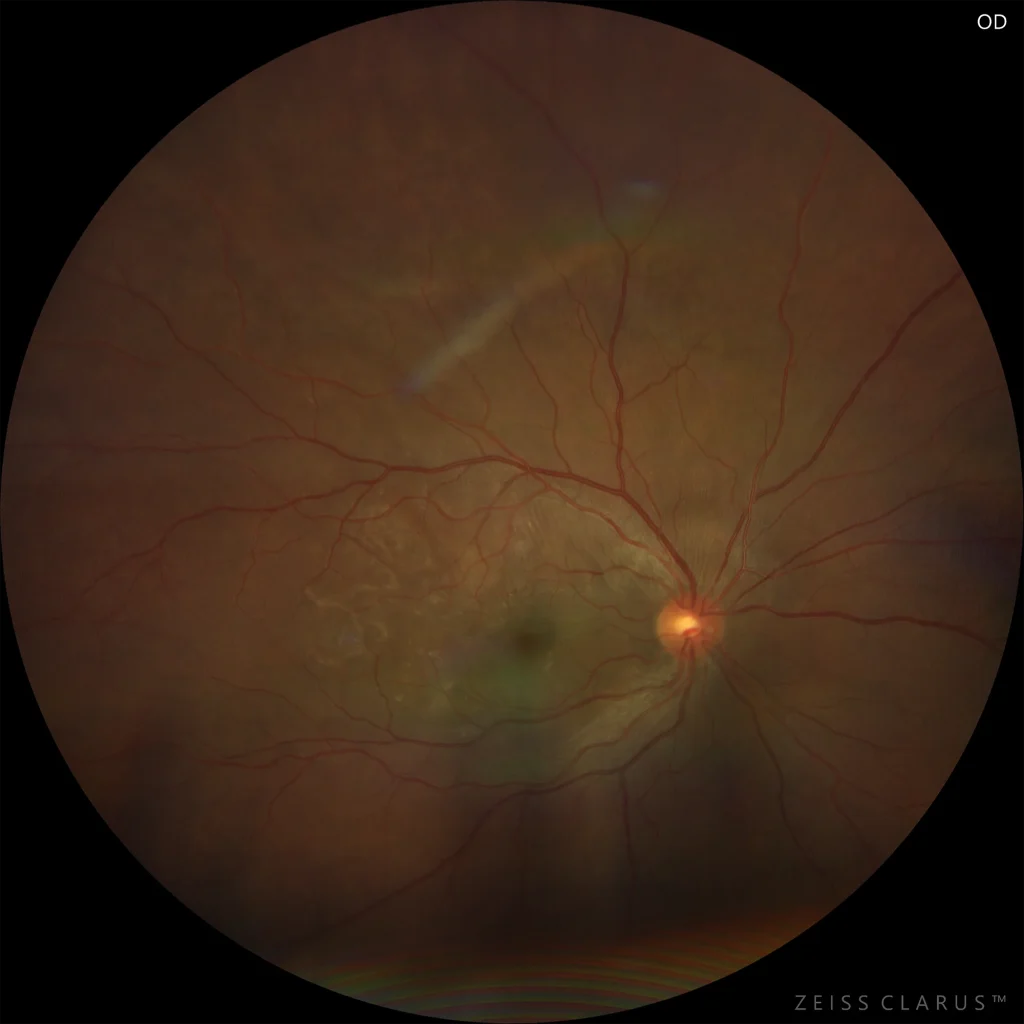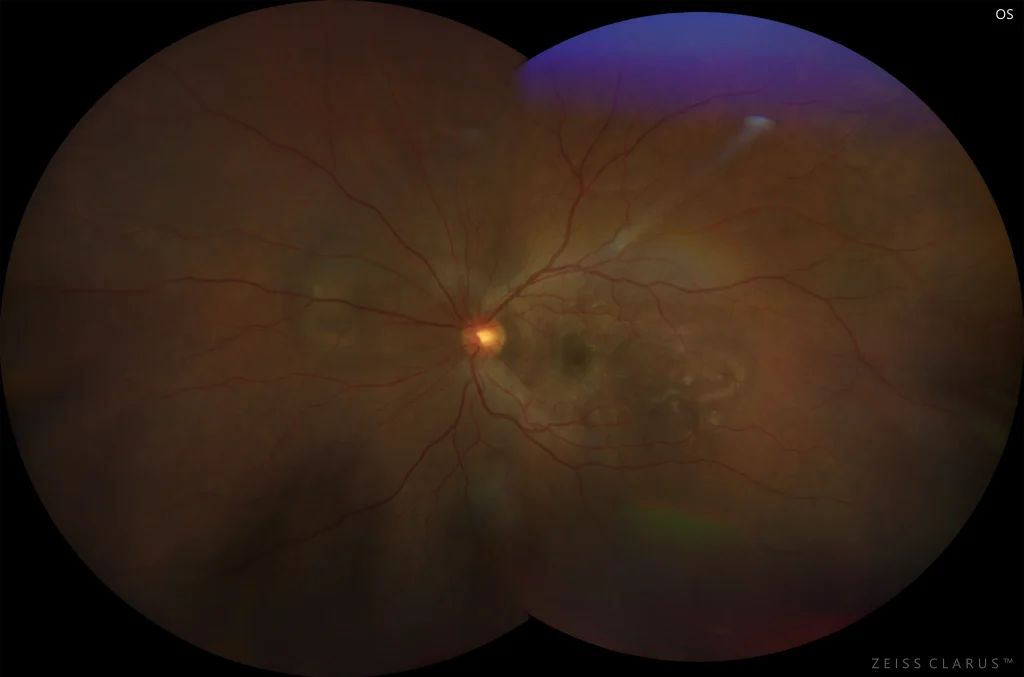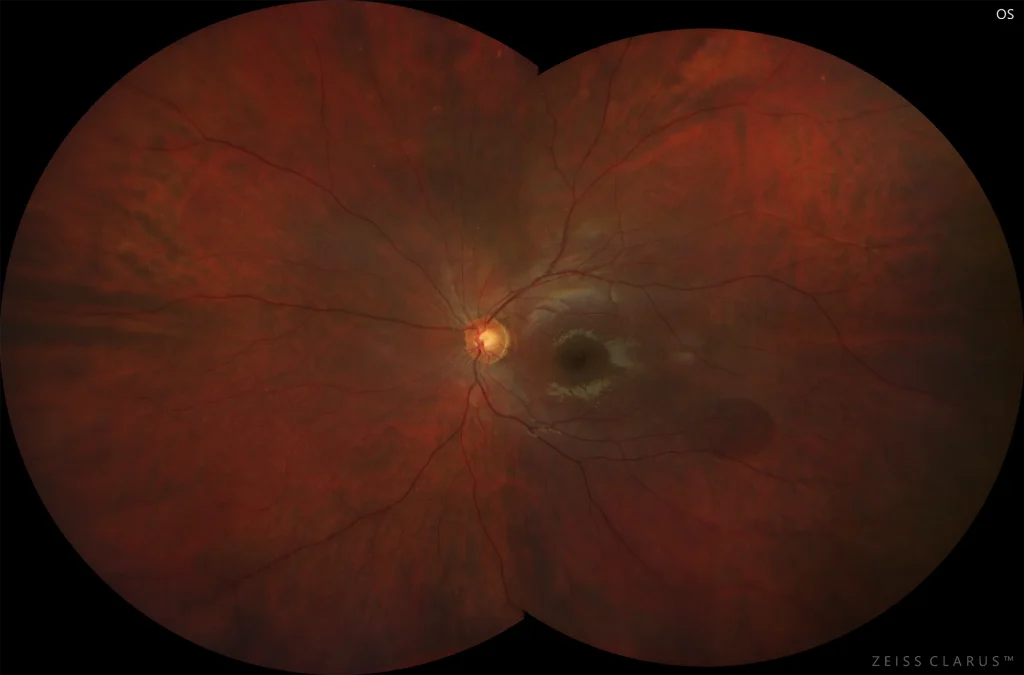Vogt-Koyanagi-Harada
Figure 3. Follow-up color retinography after the start of corticosteroid treatment showing the resolution of serous retinal detachments in the right eye.
Description
Vogth-Koyanagi-Harada (VKH) disease is a bilateral granulomatous panuveitis, with or without extraocular manifestations, that affects young adults.
It has four stages: prodromal, uveitic, chronic and recurrent. In the uveitic stage, there is a thickening of the choroid that manifests as an elevation of the peripapillary retinochoroid layer, hyperemia and edema of the optic nerve and circumscribed retinal edema, accompanied by multiple serous retinal detachments. The inflammation may be diffuse and affect the anterior chamber, presenting as panuveitis.
In the acute phase, high doses of intravenous corticosteroids are administered for 3 days, followed by high doses of corticosteroids in a slow descending regimen. The initiation of immunosuppressants as first-line treatment has been associated with improved visual acuity compared with corticosteroids alone.




